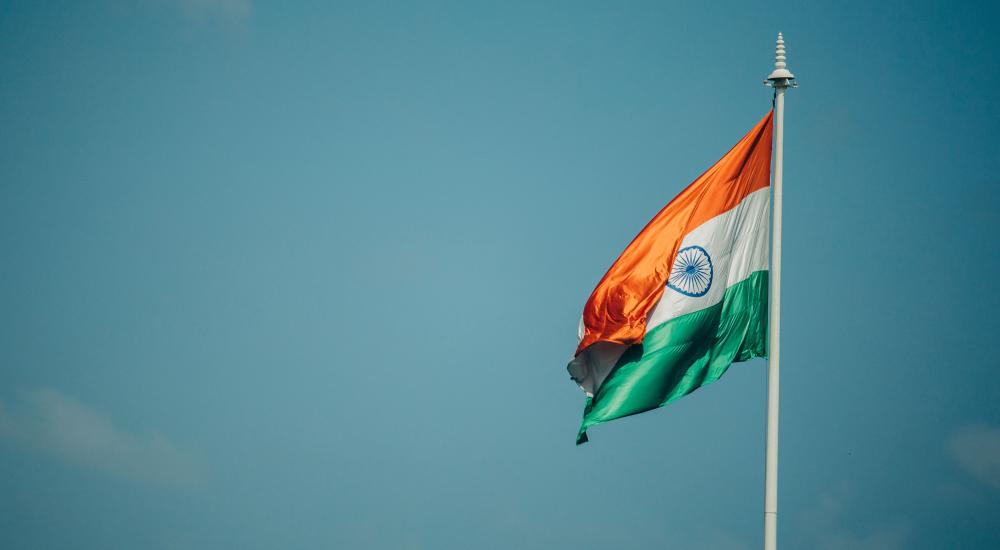Partnership Perspectives: India and the United States

Between us, we have 50 years of experience in higher education across a range of institutions: research-intensive private and public universities, a military college, a small liberal arts college, and a research institute, with our work often focused on partnerships. Over the course of our careers, we’ve seen how bilateral partnerships are more complex than one-to-one international collaborations, often engaging a range of actors outside two organizations. We have also seen extraordinary impacts from partnership: advances in research, career-changing opportunities for students, and support between institutions to advance goals and mutual interests. We both wanted to expand on our partnership experiences to identify new ways to articulate components of our work that lead to good outcomes. We also wanted to learn from others who facilitate partnerships and to do so through a focused program. Thus, earlier this year, we participated in a Fulbright-Nehru International Education Administrators Seminar, organized by the U.S.-India Educational Foundation, to advance our knowledge of the higher education and research landscape in India.
So, what was the return on investment for participating in the seminar?
The program allowed us to advance our technical partnership skills and our relationship-building skills—two critical components of successful institutional partnerships.
In any successful bilateral partnership, there are a myriad of influences that shape the relationship: a university’s or institution’s strategies, priorities, teaching and research strengths, enrollment needs, and more. Resources, and resource constraints, also affect the possibilities in a partnership. This program offered many firsthand opportunities to understand factors that influence partnerships between institutions, including the wider landscape in the home countries of both partners: funding schemes, national priorities and security interests, policies, and, often, political winds. The Fulbright-Nehru program allowed us to elevate our awareness of these factors in a new environment and understand how these factors affect partners and potential partners in India.
In any successful bilateral partnership, there are a myriad of influences that shape the relationship
Our program was framed with materials and panel discussions focusing on India’s New Education Policy (NEP), an ambitious 20-year plan and the country’s first comprehensive education policy since 1986. At each of the 14 institutions of higher education and the research park we visited over the course of two weeks in Mumbai, Chennai, and Delhi, we discussed opportunities, constraints, and varied perspectives on the New Education Policy and its potential impact on education and research.
Throughout this experience, we built skills and knowledge in three core areas related to partnerships.
1. We strengthened our partnership strategies and ability to advance student mobility.
We were exposed to academic and research priorities across a range of types of institutions: discipline-focused colleges; state and national public institutions; private and religious-minority colleges; a college for women; and the Indian Institutes of Technology. We heard about their strategies for academics, internationalization, and research, which allowed us to better see intersections for potential collaboration and the factors that influence their approaches to external collaboration. In some cases, we learned about administrative structures that support student mobility, student success, and research operations, helping us understand internal institutional resources available for collaboration.
If we didn’t make a connection with a particular institution, we still learned from our colleagues and the host, improving our skills and ability to partner in the future.
At each of the institutions and research park we visited, one or two colleagues in our 14-person cohort identified specific potential opportunities for collaboration. If we didn’t make a connection with a particular institution, we still learned from our colleagues and the host, improving our skills and ability to partner in the future. For example, we visited a journalism school that was unlikely to be a research or exchange partner for either of us at this time due to the nature of our work, but we learned important details about the media and journalism workforce in India and about circumstances affecting professionals working in the press—opportunities, limitations, hiring trends, and more—helping us understand the place and time in which our potential partners in India operate. The visit also shaped our awareness of the potential impact of press freedoms and media relations for other partners around the world.
2. We came away with a better understanding of cultural norms that are fundamental to our work.
As professionals in international education, we have been drawn to scholarly studies and personal narratives about the migration of people and culture, including stories, memories, and experiences of dislocation that we carry with us when we move to new places. Prior to participating in the Fulbright-Nehru program, both of us were aware of the important role that the members of the Indian diaspora have in our states of Georgia and North Carolina, as well as their influence on U.S.-India relations. The program, however, helped sharpen our awareness of the critical ways that the Indian diasporic community continues to influence the development of India. Our improved understanding of the shared value of many in the diaspora to support their country of origin helps us be better partners locally and globally, while also giving us better skills in identifying and nurturing potential paths for collaboration in research and innovation. Sheila plans to connect more with the local Indian community as a recruitment outlet and put her new cultural knowledge to use in outreach and student success efforts.
Our improved understanding of the shared value of many in the diaspora to support their country of origin helps us be better partners locally and globally, while also giving us better skills in identifying and nurturing potential paths for collaboration in research and innovation.
Additionally, with long histories of working in public universities, both of us are committed to educational access for undergraduates. We learned about Indian national priorities for inclusion in higher education and institutional tactics to recruit and support students from diverse backgrounds. During our interaction with EducationUSA staff, we also had the chance to hear how families are starting to see the value in arts and humanities and how the value of a liberal arts education is influencing curriculum changes under the NEP. This knowledge helps us better identify partnership opportunities in India and understand the interests and profiles of prospective international applicants from the country.
A wall falls away when we tell a student or scholar that we have participated in a Fulbright program in their home country. It is like saying, “I see you,” and can easily lead to deeper conversations on understanding their transition to the United States and sense of well-being in the communities we share. What is working for them, what is difficult, what do they miss? When we ask these important questions authentically and often, we can make trusted colleagues who can serve as cultural informants and create a greater sense of community.
3. We believe that Fulbright programs are a great tool for relationship cultivation and partnerships.
Through presentations, articles, and conversations, we have been able to inform our communities that the Fulbright Program has a plethora of opportunities for varying lengths of time and for a variety of disciplines. Participating in this seminar allowed us to better help others apply for a program and join the Fulbright family.
This experience has also allowed us to build a lifelong professional network, which is important to the success of current and potential partnerships. Our cohort included a university president, a provost, recruiters, an economic engagement officer, and other senior leaders. We will continue to consult and rely on this network of professionals and build friendships with them throughout the rest of our careers. In the same way that we hope our students will build lifelong relationships and memories from their time abroad, we have done the same. •
Sheila Schulte is associate vice president for international programs at the University of North Georgia. Katie Bowler Young is operations director and interim leader for university collaborations at RTI International.
About International Educator
International Educator is NAFSA’s flagship publication and has been published continually since 1990. As a record of the association and the field of international education, IE includes articles on a variety of topics, trends, and issues facing NAFSA members and their work.
From in-depth features to interviews with thought leaders and columns tailored to NAFSA’s knowledge communities, IE provides must-read context and analysis to those working around the globe to advance international education and exchange.
About NAFSA
NAFSA: Association of International Educators is the world's largest nonprofit association dedicated to international education and exchange. NAFSA serves the needs of more than 10,000 members and international educators worldwide at more than 3,500 institutions, in over 150 countries.
NAFSA membership provides you with unmatched access to best-in-class programs, critical updates, and resources to professionalize your practice. Members gain unrivaled opportunities to partner with experienced international education leaders.














